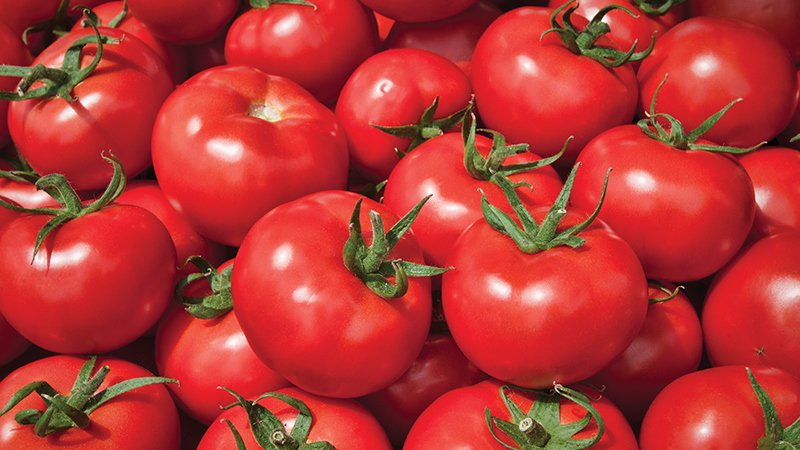RNA Finally in Play To Help in Battle Against Pear Psylla

USDA ARS entomologist Rodney Cooper has set his sights on developing an RNA-based biopesticide to fight pear psylla.
Photo: Tomasz – stock.adobe.com
Decades in the making, RNA-based biopesticides are finally slated to begin reaching the agricultural market in 2023.
Pear growers, in particular, should share in the excitement, although they will have to wait in line a bit longer than some farmers to receive such help against their No. 1 nemesis — pear psylla.
GreenLight Biosciences this year plans to release the first RNA-targeting biopesticide, one that will combat the Colorado potato beetle. The Medford, MA-based company will follow-up in 2024 with an RNA-based biopesticide that will benefit honey bees against the Varroa mite. By the end of the decade, GreenLight hopes to use the same technology against the Diamondback moth, two-spotted spider mite, and pollen beetle.
“Finally, after decades of talk, some people are actually developing something that is going to be used in the field,” Rodney Cooper, a Research Entomologist with USDA ARS in Wapato, WA, said at the North Central Washington Tree Fruit Days conference, hosted by Washington State University Extension.
PEAR PSYLLA STATUS
A little deeper into the pipeline, psyllids have become a focal point among researchers of RNA-based biopesticides, including Cooper.
In Florida and now California, the citrus industry battles the citrus psyllid, vector of the dreaded citrus greening disease. Wayne Hunter, a Florida-based USDA ARS Entomologist, has been conducting trials to develop RNA-targeting biopesticides against the insect.
With guidance from Hunter, Cooper and his team have enjoyed success on the other side of the country while trialing those same RNA targets against potato psyllids. One such target killed more than 75% of the pests, Cooper says.
“This was our first go at it; we’re still working on this,” Cooper says. “But the work is advancing for these other psyllid pests.”
Unfortunately for pear growers, there are no genomic resources for pear psylla — no genomes or transcriptomes (the collection of all gene readouts present in a cell) — whereas, with citrus and potato psyllids, there are “mountains of resources” to start such research, Cooper says.
“That’s what we’ve been working on the last couple of years — trying to get pear psylla caught up with citrus psyllid and potato psyllid,” he says.
As background, Cooper analogizes that DNA represents the “master copy” of the body, while RNA is like a “disposable photocopy that tells the insect how to make the proteins that do everything.” His team strives to target the RNA, he says, but it
first needs to know what the DNA is and what those little RNA pieces are.
“That’s what this work is leading to,” he says.
The process of sequencing the genome of pear psylla is almost finished and available to his team, Cooper says. As for sequencing the transcriptome of the pear psylla, that process will lead to “really long, good RNA data” and eventually annotation of the genome.
GENE EXPRESSION: SEASONAL CHANGES
Pear psylla present in two adult forms — as a summerform morphotype and then as a diapausing and eventually post-diapausing winterform morphotype. The winterforms are much larger and darker.
“They don’t just look different, but they behave much differently from one another as well,” Cooper says. “The summerforms are the ones we are trying to control in the pear orchard. They are reproductive — about three generations a year. They are very much attracted to pear and also the color green.”
In the fall, the winterforms enter reproductive diapause. While still attracted to the color of foliage, they are no longer attracted to pear, instead spreading to non-pear shelter plants, such as conifers. They are more susceptible to certain insecticides — “We don’t know why,” Cooper says — as well as attack by bacteria.
By January, the same winterform insects break diapause and go through a very slow reproductive development. They are no longer attracted to the color green and return to pear as the temperatures warm. They begin laying eggs that generate the first summerform generation.
“The point here is that there are major seasonal changes that go on throughout the year,” Cooper says. “Those winterform populations are more vulnerable. There is a population bottleneck there. If we can find a way to target those winterform populations, it could potentially give us sort of an up the rest of the year.”
Already-identified gene classes in winterform psylla are “really cool,” Cooper says, in that they could explain various functions in diapausing insects, including:
• Increased diapause form growth rate
• Desiccation resistance
• Higher production of chemical energy
• Slow programmed cell death, which extends lifespan
• Fat reserve accumulation and desiccation resistance
• Production of cryoprotectants to prevent ice formation
“We’re making progress on this,” Cooper says. “We’re finding some gene classes that maybe could be useful targets in the development of RNA-based biopesticides down the road. That’s the easy part. The hard part and the next part will be to identify delivery methods. That is going to be much more difficult.”










